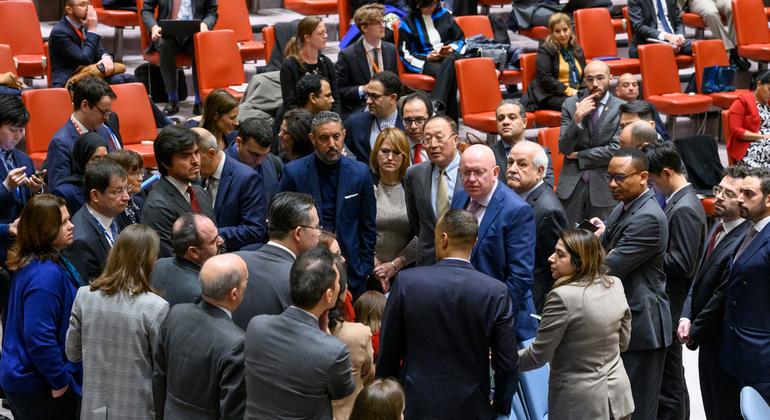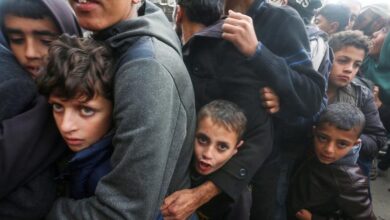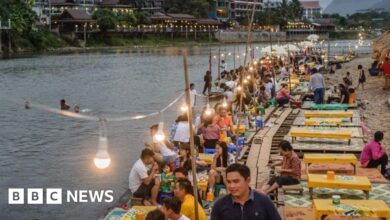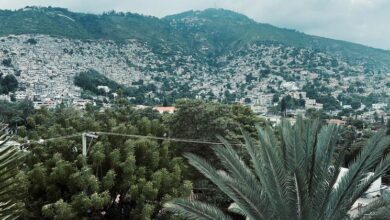Explainer: The journey of a United Nations Security Council resolution

The 15-member Council is responsible for taking action, through resolutions and decisions, on any threat to international peace and security, but sometimes the adoption of a draft a legally binding document for the 193 Member States of the United Nations faces many obstacles.
For example, since the start of the Gaza War in October 2023, Council members have drafted, negotiated and adopted several related resolutions while several other drafts and amendments have been rejected. rejected due to not having the necessary 9 votes or being vetoed, a privilege enjoyed by the 5 members of the Council. permanent members – China, France, Russia, Great Britain and the United States. The veto was indeed used.
Sometimes, single words, verbs or adjectives can hinder progress as countries race for dominance. In the case of some proposals in Gaza, some want a ceasefire, others want an end to hostilities.
Sometimes the Council cannot agree. Whenever a permanent member of the Council has a veto, new mechanism introduced by Liechtenstein in 2022 will automatically activate Chairman of the General Assembly convene a formal meeting of United Nations member states or an assembly emergency special session to discuss the disputed issue.
Another route comes with Unite for peacepassed in 1950, essentially positing that if Security Council fails to carry out its responsibility to maintain international peace and security, the General Assembly may convene an emergency special session.
Up to now, 11 emergency special sessions has been summoned. The United for Peace Resolution was implemented 13 times between 1951 and 2022, invoked by both the Security Council (eight times) and the General Assembly (five times). Eleven of those cases took place in the form of emergency special sessions.
However, the process of drafting resolutions has remained largely unchanged since the Council adopted its first resolution in 1946 to Establishment of the UN military advisory committee. From idea to legally binding document for all 193 United Nations Member States, we have followed the journey of a draft resolution.

Security Council members from (starting second from left) India, Egypt and Nicaragua informally confer on a draft resolution before the start of their meeting in New York in 1984. (file)
Begin
The first step is to produce an initial draft, which may be sponsored by one or more Council members.
According to Nikolai Galkin, senior political officer of the United Nations Secretariat’s Security Council Affairs Department, the initial drafting of a crisis like Gaza could be expanded and go beyond 15 members.
The process usually begins with advisors from the member’s permanent mission to the United Nations in New York who specialize in the issue at hand. These experts can organize consultations with regional groups, countries of interest and other key stakeholders as well as partners in Council member delegations.
The goal is to unanimously or by majority pass a resolution calling for action to end the conflict, approve a peacekeeping mission, impose sanctions, or refer the case to competent authorities . International Court of Justice (ICJ), all of which are part of the Council’s mandate under the provisions of the UN Charter.
At this stage, the sponsor or writer of the manuscript will usually try to get as many voices as possible on the issue.

Council members from Pakistan, what was then Yugoslavia and Panama discussed a draft resolution on Latin America before the meeting in Panama in 1973. (file)
A ‘zero draft’
Next, the initial idea is revised into a “zero draft.”
That means it “isn’t even a proper draft,” Mr. Galkin said.
Rather, it is a literal draft text created for the comments of Council members, which the writer will ask the experts to put into a further revised version.
Once draft zero is ready, it is circulated, most often via email. The editor will then request additional comments from Council members, collecting them via email, in person or randomly via WhatsApp.

Before the Security Council meeting began in Panama in 1973, members held discussions after receiving a second draft resolution on Latin America. (document)
Negotiate and compromise
There are disagreements. As for the draft on zero Gaza signed by the United Arab Emirates (UAE) in December, there have been many disagreements over the term “ceasefire,” which was featured in news reports about the process.
Several delegations have said they would support (or not support) the inclusion of such a provision.
In general, the negotiations that followed were aimed at resolving differences. They are usually held off-site and only on rare occasions do members sign up for a formal “informal” discussion in the Consultation Room, a few steps down the hall from the Council Chambers .
Sometimes, comments on drafts aren’t even made in New York but are sent back to members’ home capitals.

A view of the documents outlining the agenda of three Security Council meetings. (document)
What is blue?
After one or more rounds of back-and-forth discussion, the writer will produce the final draft. In the case of the UAE, the final Gaza draft was circulated to the wider membership of the United Nations, as happens from time to time. Within 24 hours, 97 United Nations member states co-sponsored it.
At this time, the revised draft will be document numbered and the text formatted and published “in blue” for email to Council members.
Before COVID-19 pandemic, the manuscripts were printed in blue ink and distributed at each Council member’s chair and at the Chamber’s document counter. To be environmentally friendly, drafts are no longer printed but emailed to Council members, still in blue.
Why blue? The reason decades ago happened to come from a photocopy machine placed in the corner of the Security Council office. It prints a small amount of drafts for 15 members, and the only ink available is blue.
When it’s blue, it usually means the Council is ready to act. That usually happens within 24 hours, when a formal meeting is convened.

In 2017, before the COVID-19 pandemic lockdown, delegates collected documents from a conference staff member in the Security Council Chamber. (document)
Voting and vetoing
At a scheduled formal open meeting, members gathered around the Security Council Chamber’s iconic horseshoe-shaped table. The Chairman opens monthly meetings and calls for votes. Some may speak before the vote, expressing the delegation’s views or reservations. Some may even offer amendments to the draft.
Then it’s time to take action.
The Chairman of the Council said: “All in agreement, please raise your hands.”
Raising hands around the table shows support, opposition and abstention. At least nine votes are needed for the draft to pass unless there is a veto, a prerogative held by the five permanent members of the Council – China, France, Russia, the United Kingdom and the United States.
The President conducts the final reading of the vote and the draft will be approved or rejected.

US Ambassador Linda Thomas-Greenfield abstained from voting on the draft resolution during the United Nations Security Council meeting on the situation in the Middle East, including the Palestinian issue. (document)
From blue to black
The final step is to produce and circulate the finished document, which is translated into the six official languages of the United Nations – Arabic, Chinese, English, French, Russian and Spanish – and published. published in black.
All manuscripts, whether rejected or approved, are numbered and recorded United Nations Documentation System.
For those looking for past drafts, Mr. Galkin said that in the coming months, new measures will be implemented to make it easier to find all draft resolutions, no matter how rejected. or through, on the database. United Nations Security Council website.

The exhibition The Birth of United Nations Documents in 1948 includes a display of the official records of the Security Council. (document)




